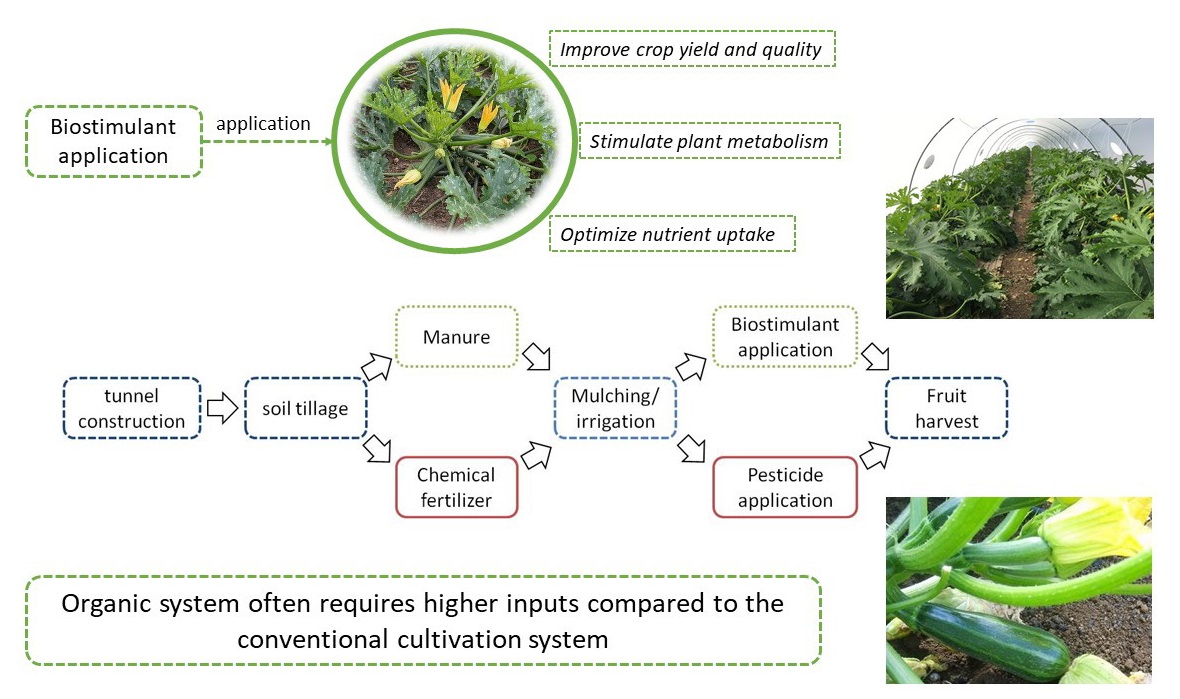
Published 2021-05-21
Keywords
- Cucurbita pepo L.,
- fruit quality,
- protected cultivation,
- sustainability,
- water use efficiency
- yield ...More
How to Cite
Copyright (c) 2021 Antonio Ferrante

This work is licensed under a Creative Commons Attribution 4.0 International License.
Abstract
Organic production must be carried out following the EU regulations and their protocols. On the contrary, conventional cultivation instead can be carried out using the best agronomic approaches available and using the latest innovative resources. Organic cultivation is more widespread in permanent crops (olive and grape crops) than vegetable ones, and even less in protected cultivation systems, due to the high intensity production processes which render the application of organic growing protocols more complex. The comparison between the two systems of cultivation, organic and conventional, is difficult because the two cultivation methods are often carried out in different farms and hence in different environmental conditions. Cultivation using the two methods was conducted in a greenhouse from November to March 2017/2018. Results demonstrated that the total fruit yield zucchini squash in organic cultivation was not significantly different to the conventional one (43.2 Mg ha-1 and 46.4 Mg ha-1, respectively). The agronomic inputs (fertilizers, fungicides, and insecticides) were higher in the organic cultivation system than conventional one. The water use efficiency was higher in the conventional cultivation system (150.6 kg m-3 ha-1) compared to the organic one (147.6 kg m-3 ha-1). No statistically significant differences were found for the fruit number per plant and for the marketable fruit at the end of the growing period. Significant differences for the harvest period were only detected for fresh weight, shape index, firmness, and titratable acidity. In conclusion, this work demonstrated that the organic system required higher inputs compared to the conventional cultivation. The extensive experience of the grower allowed for comparable yields between the two systems.




